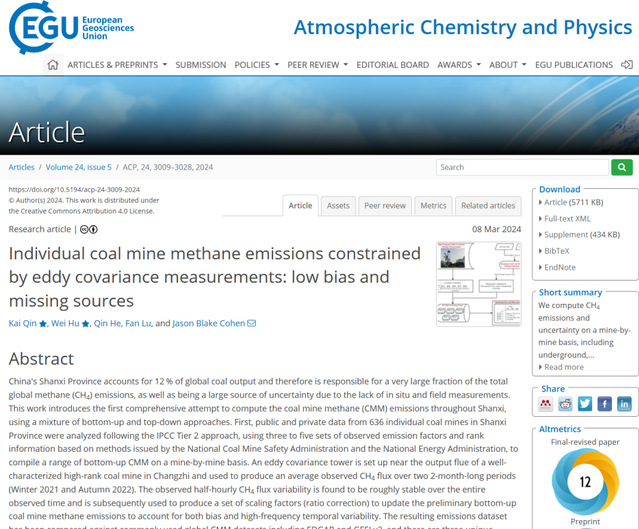School of Environment and Spatial Informatics of CUMT has made progress in the field of satellite-earth collaborative monitoring of coal mine methane
Publisher : Time : 28.March 2024 Browse the number :

Methane emissions reduction can have a better effect on controlling temperature rise in the short term and is a powerful lever to slow down the greenhouse effect. Coal mining and post-mining activities are the largest source of methane emissions in China. Satellite-earth collaborative monitoring of methane emissions can provide important support for emission reduction. The Carbon Emission and Air Quality Remote Sensing Group of School of Environment and Spatial Informatics used the domestic Gaofen-5 satellite to reveal the characteristics of methane emission from point sources in the coal industry in Shanxi Province, and estimated methane emissions from more than 600 coal mines in Shanxi Province by combining the “bottom-up” and “top-down” methods.
The results of this study were published in two papers. One entitled “Individual Coal Mine Methane Emissions Constrained by Eddy Covariance Measurements: Low Bias and Missing Sources” was published in Atmospheric Chemistry and Physics (Chinese Academy of Sciences, Zone 1 TOP journal), with Prof. Qin Kai as the first author and Prof. Jason Cohen as the corresponding author. The other titled “Characterization of Methane Point Source Emissions from Coal Industry in Shanxi Province Based on Gaofen-5 Satellite” was published in Coal Journal, with Prof. Qin Kai as the corresponding author.
The Remote Sensing of Carbon Emissions and Air Quality group, co-led by Prof. Qin Kai and Prof. Jason Cohen, focuses on the environmental and climatic impacts of the energy industry and carries out the research of “Remote Sensing Inversion - Emission Characterization - Impact Attribution” by using space-space-earth observation means, in order to meet the needs of carbon emission reduction and air quality improvement.